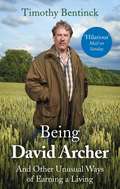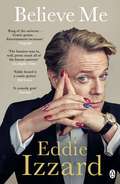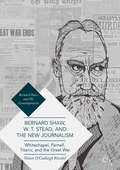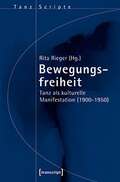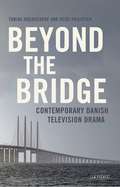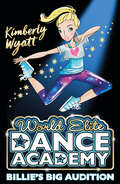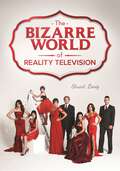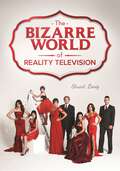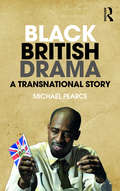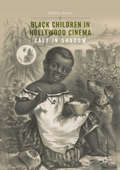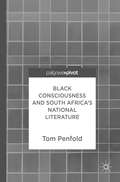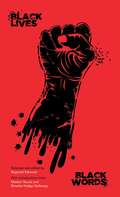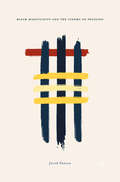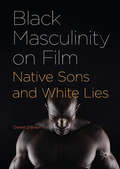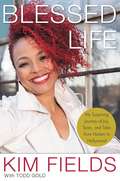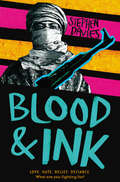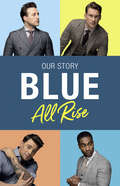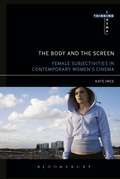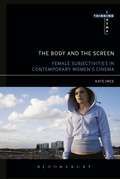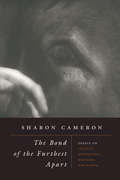- Table View
- List View
Being David Archer: And Other Unusual Ways of Earning a Living
by Timothy Bentinck'Hilarious' Mail on Sunday'Stylish, very funny memoir' Daily MailTimothy Bentinck has played the part of David Archer in BBC Radio 4's The Archers since 1982. He is also the Earl of Portland and the voice of 'Mind The Gap' on the Piccadilly Line. Aimed primarily at the five million regular Archers listeners, Timothy takes the reader behind the scenes of the longest running drama series in the world, a British institution with a theme tune that Billy Connolly wants to be the National Anthem. But that's not all. With wry, self-deprecating humour, Timothy recounts his enormously varied life - a successful actor in TV, film and theatre, a voice specialist working in every vocal medium. He's also been an HGV truck driver, a US tour guide, a computer programmer and website designer, an inventor with UK and US patents, farm worker, house renovator and he sat as a crossbencher in the House of Lords for three years.Unlike many acting memoirs, this isn't a succession of thespian tales of freezing digs, forgotten lines and name dropping. This is an articulate, funny and thoughtful account of how to survive an insecure life.
Believe Me: A Memoir of Love, Death and Jazz Chickens
by Eddie IzzardAs heard on BBC Radio Four - Book of the Week . . . A memoir of love, death and jazz chickens, Eddie Izzard's fabulous Believe Me is his ONE AND ONLY AUTOBIOGRAPHY . . .-----------------------------'I know why I'm doing all this,' I said. 'Everything I do in life is trying to get her back. I think if I do enough things . . . that maybe she'll come back.'When Eddie Izzard was six, he and his brother Mark lost their mother. That day, he lost his childhood too. Despite or perhaps because of this, he has always felt he needed to take on things that some people would consider impossible. In Believe Me, Eddie takes us on a journey which begins in Yemen (before the revolution), then takes us to Northern Ireland (before The Troubles), England and Wales, then across the seas to Europe and America. In a story jam-packed with incident he tells of teddy bear shows on boarding school beds, renouncing accountancy for swordfighting on the streets of London and making those first tentative steps towards becoming an Action Transvestite, touring France in French and playing the Hollywood Bowl. Above all, this is a tale about someone who has always done everything his own way (which often didn't work at first) and, sometimes almost by accident but always with grit and determination, achieving what he set out to do. Brimming with the surreal humour and disarming candor of his shows (with occasional digressions), Believe Me tells the story of a little boy who lost his mother yet who has risen to become a star of comedy and drama, a leading advocate of total clothing rights, a British European and extreme runner of marathons, who bestrides the world stage as a world stage bestrider.'King of the Universe . . . Comic genius . . . Entertainment incarnate' Telegraph
Bernard Shaw, W. T. Stead, and the New Journalism: Whitechapel, Parnell, Titanic, and the Great War
by Nelson O'Ceallaigh RitschelThis book explores Bernard Shaw’s journalism from the mid-1880s through the Great War—a period in which Shaw contributed some of the most powerful and socially relevant journalism the western world has experienced. In approaching Shaw’s journalism, the promoter and abuser of the New Journalism, W. T. Stead, is contrasted to Shaw, as Shaw countered the sensational news copy Stead and his disciples generated. To understand Shaw’s brand of New Journalism, his responses to the popular press’ portrayals of high profile historical crises are examined, while other examples prompting Shaw’s journalism over the period are cited for depth: the 1888 Whitechapel murders, the 1890-91 O’Shea divorce scandal that fell Charles Stewart Parnell, peace crusades within militarism, the catastrophic Titanic sinking, and the Great War. Through Shaw’s journalism that undermined the popular press’ shock efforts that prevented rational thought, Shaw endeavored to promote clear thinking through the immediacy of his critical journalism. Arguably, Shaw saved the free press.
Bernard Shaw, W. T. Stead, and the New Journalism: Whitechapel, Parnell, Titanic, and the Great War
by Nelson O'Ceallaigh RitschelThis book explores Bernard Shaw’s journalism from the mid-1880s through the Great War—a period in which Shaw contributed some of the most powerful and socially relevant journalism the western world has experienced. In approaching Shaw’s journalism, the promoter and abuser of the New Journalism, W. T. Stead, is contrasted to Shaw, as Shaw countered the sensational news copy Stead and his disciples generated. To understand Shaw’s brand of New Journalism, his responses to the popular press’ portrayals of high profile historical crises are examined, while other examples prompting Shaw’s journalism over the period are cited for depth: the 1888 Whitechapel murders, the 1890-91 O’Shea divorce scandal that fell Charles Stewart Parnell, peace crusades within militarism, the catastrophic Titanic sinking, and the Great War. Through Shaw’s journalism that undermined the popular press’ shock efforts that prevented rational thought, Shaw endeavored to promote clear thinking through the immediacy of his critical journalism. Arguably, Shaw saved the free press.
Bewegungsfreiheit: Tanz als kulturelle Manifestation (1900-1950) (TanzScripte #48)
by Rita RiegerUngewöhnliche Bewegungsmuster faszinieren von 1900 bis 1950 sowohl Kunst, Technik und Medizin als auch Alltagskulturen. Die in diesem Band versammelten Einzelanalysen tänzerischer Bewegungen in Ballett, Oper, Musical, Theater, Film und Literatur zeigen die dynamische Verbindung von ästhetischen, medialen und kulturpolitischen Ansprüchen, hinterfragen neben der Tanzästhetik tradierte Konzepte wie Körper, Bewegung, Sprache, Freiheit, Kunst und Kultur und bestimmen diese neu. Die Vielfalt an gleichzeitig in Nord- und Südamerika, Europa und Asien praktizierten Tänzen sowie ihre wandelbaren kulturellen Bedeutungszuschreibungen werden u. a. in Beiträgen von Inge Baxmann, Claudia Jeschke, Rolf Kailuweit, Astrid Poier-Bernhard, Anna Seidl und Frank Reza Links charakterisiert.
Beyond The Bridge: Contemporary Danish Television Drama (Popular Television Genres)
by Tobias Hochscherf Heidi PhilipsenDanish television drama has never been as successful as in recent years. Drawing worldwide acclaim from critics and audiences alike, programmes like The Killing, Borgen, The Bridge and The Legacy demonstrate widespread fascination with Danish style, aesthetics and culture as seen through television narratives. This book uses familiar, alongside lesser known, case studies of drama series to demonstrate how the particular features of Danish production – from work cultures, to storytelling techniques and trans-national cooperation – have enhanced contemporary Danish drama's appeal both at home and abroad.
Billie's Big Audition (World Elite Dance Academy #1)
by Kimberly WyattWelcome to the World Elite Dance Academy – a brand new children's book series from international superstar, wellbeing guru and Pussycat Doll, Kimberly Wyatt
The Bizarre World of Reality Television
by Stuart LenigHow do reality television programs shape our view of the world and what we perceive as real and normal? This book explores the bizarre and highly controversial world of reality television, including its early history, wide variety of subject matter, and social implications.In recent decades, reality television shows ranging from Keeping up with the Kardashians to Duck Dynasty have become increasingly popular. Why are these "unscripted" programs irresistible to millions of viewers? And what does the nearly universal success of reality shows say about American culture? This book covers more than 100 major and influential reality programs past and present, discussing the origins and past of reality programming, the contemporary social and economic conditions that led to the rise of reality shows, and the ways in which the most successful shows achieve popularity with both male and female demographics or appeal to specific, targeted niche audiences.The text addresses reality TV within five, easy-to-identify content categories: competition shows, relationship/love-interest shows, real people or alternative lifestyle and culture shows, transformation shows, and international programming. By examining modern reality television, a topic of great interest for a wide variety of readers, this book also discusses cultural and social norms in the United States, including materialism, unrealistic beauty ideals, gender roles and stereotypes in society, dynamics of personal relationships, teenage lifestyles and issues, and the branding of people for financial gain and wider viewership.
The Bizarre World of Reality Television
by Stuart LenigHow do reality television programs shape our view of the world and what we perceive as real and normal? This book explores the bizarre and highly controversial world of reality television, including its early history, wide variety of subject matter, and social implications.In recent decades, reality television shows ranging from Keeping up with the Kardashians to Duck Dynasty have become increasingly popular. Why are these "unscripted" programs irresistible to millions of viewers? And what does the nearly universal success of reality shows say about American culture? This book covers more than 100 major and influential reality programs past and present, discussing the origins and past of reality programming, the contemporary social and economic conditions that led to the rise of reality shows, and the ways in which the most successful shows achieve popularity with both male and female demographics or appeal to specific, targeted niche audiences.The text addresses reality TV within five, easy-to-identify content categories: competition shows, relationship/love-interest shows, real people or alternative lifestyle and culture shows, transformation shows, and international programming. By examining modern reality television, a topic of great interest for a wide variety of readers, this book also discusses cultural and social norms in the United States, including materialism, unrealistic beauty ideals, gender roles and stereotypes in society, dynamics of personal relationships, teenage lifestyles and issues, and the branding of people for financial gain and wider viewership.
Black British Drama: A Transnational Story
by Michael PearceBlack British Drama: A Transnational Story looks afresh at the ways black theatre in Britain is connected to and informed by the spaces of Africa, the Caribbean and the USA. Michael Pearce offers an exciting new approach to reading modern and contemporary black British drama, examining plays by a range of writers including Michael Abbensetts, Mustapha Matura, Caryl Phillips, Winsome Pinnock, Kwame Kwei-Armah, debbie tucker green, Roy Williams and Bola Agbaje. Chapters combine historical documentation and discussion with close analysis to provide an in-depth, absorbing account of post-war black British drama situated within global and transnational circuits. A significant contribution to black British and black diaspora theatre studies, Black British Drama is a must-read for scholars and students in this evolving field.
Black British Drama: A Transnational Story
by Michael PearceBlack British Drama: A Transnational Story looks afresh at the ways black theatre in Britain is connected to and informed by the spaces of Africa, the Caribbean and the USA. Michael Pearce offers an exciting new approach to reading modern and contemporary black British drama, examining plays by a range of writers including Michael Abbensetts, Mustapha Matura, Caryl Phillips, Winsome Pinnock, Kwame Kwei-Armah, debbie tucker green, Roy Williams and Bola Agbaje. Chapters combine historical documentation and discussion with close analysis to provide an in-depth, absorbing account of post-war black British drama situated within global and transnational circuits. A significant contribution to black British and black diaspora theatre studies, Black British Drama is a must-read for scholars and students in this evolving field.
Black Children in Hollywood Cinema: Cast in Shadow
by Debbie OlsonThis book explores cultural conceptions of the child and the cinematic absence of black children from contemporary Hollywood film. Debbie Olson argues that within the discourse of children’s studies and film scholarship in relation to the conception of “the child,” there is often little to no distinction among children by race—the “child” is most often discussed as a universal entity, as the embodiment of all things not adult, not (sexually) corrupt. Discussions about children of color among scholars often take place within contexts such as crime, drugs, urbanization, poverty, or lack of education that tend to reinforce historically stereotypical beliefs about African Americans. Olson looks at historical conceptions of childhood within scholarly discourse, the child character in popular film and what space the black child (both African and African American) occupies within that ideal.
Black Children in Hollywood Cinema: Cast in Shadow
by Debbie OlsonThis book explores cultural conceptions of the child and the cinematic absence of black children from contemporary Hollywood film. Debbie Olson argues that within the discourse of children’s studies and film scholarship in relation to the conception of “the child,” there is often little to no distinction among children by race—the “child” is most often discussed as a universal entity, as the embodiment of all things not adult, not (sexually) corrupt. Discussions about children of color among scholars often take place within contexts such as crime, drugs, urbanization, poverty, or lack of education that tend to reinforce historically stereotypical beliefs about African Americans. Olson looks at historical conceptions of childhood within scholarly discourse, the child character in popular film and what space the black child (both African and African American) occupies within that ideal.
Black Consciousness and South Africa’s National Literature
by Tom PenfoldThis book analyses Black Consciousness poetry and theatre from the 1970s through to the present. South Africa’s literature, like its history, has been beset by disagreement and contradiction, and has been consistently difficult to pin down as one, united entity. Much existing criticism on South Africa’s national literature has attempted to overcome these divisions by discussing material written from a variety of different subject positions together. This book argues that Black Consciousness desired a new South Africa where African and European cultures were valued equally, and writers could represent both as they wished. Thus, a body of literature was created that addressed a range of audiences and imagined the South African nation in different ways. This book explores Black Consciousness in order to demonstrate how South African writers have responded in various ways to the changing history and politics of their country.
Black Consciousness and South Africa’s National Literature
by Tom PenfoldThis book analyses Black Consciousness poetry and theatre from the 1970s through to the present. South Africa’s literature, like its history, has been beset by disagreement and contradiction, and has been consistently difficult to pin down as one, united entity. Much existing criticism on South Africa’s national literature has attempted to overcome these divisions by discussing material written from a variety of different subject positions together. This book argues that Black Consciousness desired a new South Africa where African and European cultures were valued equally, and writers could represent both as they wished. Thus, a body of literature was created that addressed a range of audiences and imagined the South African nation in different ways. This book explores Black Consciousness in order to demonstrate how South African writers have responded in various ways to the changing history and politics of their country.
Black Lives, Black Words: 32 Short Plays (Oberon Modern Playwrights)
by Reginald EdmundDo Black Lives Matter? Selected and edited by the award winning American playwright Reginald Edmund, who produced Black Lives, Black Words across the US, which premiered in Chicago, July 2015. The international project has explored the black diaspora’s experiences in some of the largest multicultural cities in the world, Chicago, Minneapolis, Cleveland, Toronto and London. Over sixty Black writers from the UK, USA, and Canada have each written a short play to address Black issues today. Featured in this collection are: Reginald Edmund, Idris Goodwin, James Austin, Williams, Rachel Dubose, Becca C. Browne, Marsha Estell, Aaron Holland, Loy A. Webb, Lisa Langford, Christina Ham, Harrison David Rivers, Dominique Morisseau, Winsome Pinnock, Trish Cooke, Mojisola Adebayo, Rachel De-Lahay, Max Kolaru, Yolanda Mercy, Somalia Seaton, Courttia Newland, Luke Reece, Tawiah BenEben, M’Carthy Kanika Ambrose. Jordan Laffrenier. Meghan Swaby. Mary Ann Anane. Allie Woodson. Elliot Sagay. Amira Danan. Cat Davidson. Noelle Fourte and Kori Alston
Black Masculinity and the Cinema of Policing (PDF)
by Jared SextonThis book offers a critical survey of film and media representations of black masculinity in the early twenty-first-century United States, between President George W. Bush’s 2001 announcement of the War on Terror and President Barack Obama’s 2009 acceptance of the Nobel Peace Prize. It argues that images of black masculine authority have become increasingly important to the legitimization of contemporary policing and its leading role in the maintenance of an antiblack social order forged by racial slavery and segregation. It examines a constellation of film and television productions—from Antoine Fuqua’s Training Day to John Lee Hancock’s The Blind Side to Barry Jenkin's Moonlight—to illuminate the contradictory dynamics at work in attempts to reconcile the promotion of black male patriarchal empowerment and the preservation of gendered antiblackness within political and popular culture.
Black Masculinity on Film: Native Sons and White Lies
by Daniel O'BrienThis book provides wide-ranging commentary on depictions of the black male in mainstream cinema. O’Brien explores the extent to which counter-representations of black masculinity have been achieved within a predominately white industry, with an emphasis on agency, the negotiation and malleability of racial status, and the inherent instability of imposed racial categories. Focusing on American and European cinema, the chapters highlight actors (Woody Strode, Noble Johnson, Eddie Anderson, Will Smith), genres (jungle pictures, westerns, science fiction) and franchises (Tarzan, James Bond) underrepresented in previous critical and scholarly commentary in the field. The author argues that although the characters and performances generated in these areas invoke popular genre types, they display complexity, diversity and ambiguity, exhibiting aspects that are positive, progressive and subversive. This book will appeal to both the academic and the general reader interested in film, race, gender and colonial issues.
Blessed Life: My Surprising Journey of Joy, Tears, and Tales from Harlem to Hollywood
by Kim FieldsFrom "Facts of Life" to "Living Single" to "Dancing with the Stars" to wife and mom, here's the BLESSED LIFE of Kim Fields, veteran actress, TV personality, and star. Kim Fields has lived most of her life with people thinking they know her, which is understandable. From her first job on a Mrs. Butterworth syrup commercial at age 7, she has spent 40 years in the public eye. There were 9 years as Dorothy "Tootie" Ramsey on the classic sitcom The Facts of Life, 5 more in her 20s starring as Regine Hunter on the seminal coming-of-age show Living Single, and most recently appearing as herself on Real Housewives of Atlanta and Dancing with the Stars. Behind the camera, she has directed episodes of Kenan & Kel, Tyler Perry's Meet the Browns and House of Payne, and BET's Let's Stay Together. Between gigs, the pop culture icon's life has included theater, spoken word, music, speaking engagements, and simply being present to the point that she cannot go a day without someone stopping her to say, "When I was a kid, I wanted to be Tootie" or "You were my role model." Flattered and blessed, after four decades in the business, Kim finally understands the role she has played onscreen and off as a successful, outspoken African-American woman. However, for as much as she's been in the public eye, people have really never known her the way they think they have, and that's because she, herself, spent most of her life figuring herself out. Now, at age 48, she is ready to set the record straight. She says, "It's not that I've been misunderstood. It's that I finally feel like I understand me enough to tell the life story that I've been asked to write for years." It will be a chronicle of living, learning, and keen moments of self-discovery as she's journeyed through the many facets and chapters of life. Fields found faith at age 14 and has found God to be right there every step of the way since then.
Blood & Ink
by Stephen DaviesKadija is the music-loving daughter of a guardian of the sacred manuscripts of the ancient city of Timbuktu, Mali.Ali is a former shepherd boy, trained as a warrior for Allah.Tonight, the Islamist rebels are coming for Timbuktu. They will install a harsh regime of law and tear apart the peaceful world within the mud walls of the city. Television, football, radios, even music, will be banned. Kadija refuses to let go of her former life. And something in her defiance draws Ali to her.Which path will he choose?
Blue: Our Story
by Antony Costa Duncan James Lee Ryan Simon WebbeFor the first time, more than 15 years after four boys from London were first thrown together to form what would go on to become one of the most successful and infamous groups of the boyband era, Lee, Antony, Duncan and Simon tell their full, no-holds-barred story in their own inimitable words.
The Body and the Screen: Female Subjectivities in Contemporary Women’s Cinema (Thinking Cinema)
by Kate InceWinner of the British Association of Film, Television and Screen Studies Best Book Prize 2018Since the 1980s the number of women regularly directing films has increased significantly in most Western countries; in France, Claire Denis and Catherine Breillat have joined Agnès Varda in gaining international renown, while British directors Lynne Ramsay and Andrea Arnold have forged award-winning careers in feature film. This new volume in the "Thinking Cinema†? series draws on feminist philosophers and theorists from Simone de Beauvoir on to offer readings of a range of the most important and memorable of these films from the 1990s and 2000s, focusing as it does so on how the films convey women's lives and identities. Mainstream entertainment cinema traditionally distorts the representation of women, objectifying their bodies, minimizing their agency, and avoiding the most important questions about how cinema can "do justice" to female subjectivity. Kate Ince suggests that the films of independent women directors are progressively redressing the balance, reinvigorating both the narratives and the formal ambitions of European cinema. Ince uses feminist philosophers to interpret such films as Sex Is Comedy, Morvern Callar, White Material, and Fish Tank anew, suggesting that a philosophical understanding of female subjectivity as embodied and ethical should underpin future feminist film study.
The Body and the Screen: Female Subjectivities in Contemporary Women’s Cinema (Thinking Cinema)
by Kate InceWinner of the British Association of Film, Television and Screen Studies Best Book Prize 2018Since the 1980s the number of women regularly directing films has increased significantly in most Western countries; in France, Claire Denis and Catherine Breillat have joined Agnès Varda in gaining international renown, while British directors Lynne Ramsay and Andrea Arnold have forged award-winning careers in feature film. This new volume in the “Thinking Cinema” series draws on feminist philosophers and theorists from Simone de Beauvoir on to offer readings of a range of the most important and memorable of these films from the 1990s and 2000s, focusing as it does so on how the films convey women's lives and identities. Mainstream entertainment cinema traditionally distorts the representation of women, objectifying their bodies, minimizing their agency, and avoiding the most important questions about how cinema can "do justice" to female subjectivity. Kate Ince suggests that the films of independent women directors are progressively redressing the balance, reinvigorating both the narratives and the formal ambitions of European cinema. Ince uses feminist philosophers to interpret such films as Sex Is Comedy, Morvern Callar, White Material, and Fish Tank anew, suggesting that a philosophical understanding of female subjectivity as embodied and ethical should underpin future feminist film study.
The Bond of the Furthest Apart: Essays on Tolstoy, Dostoevsky, Bresson, and Kafka
by Sharon CameronIn the French filmmaker Robert Bresson’s cinematography, the linkage of fragmented, dissimilar images challenges our assumption that we know either what things are in themselves or the infinite ways in which they are entangled. The “bond” of Sharon Cameron’s title refers to the astonishing connections found both within Bresson’s films and across literary works by Tolstoy, Dostoevsky, and Kafka, whose visionary rethinkings of experience are akin to Bresson’s in their resistance to all forms of abstraction and classification that segregate aspects of reality. Whether exploring Bresson’s efforts to reassess the limits of human reason and will, Dostoevsky’s subversions of Christian conventions, Tolstoy’s incompatible beliefs about death, or Kafka’s focus on creatures neither human nor animal, Cameron illuminates how the repeated juxtaposition of disparate, even antithetical, phenomena carves out new approaches to defining the essence of being, one where the very nature of fixed categories is brought into question. An innovative look at a classic French auteur and three giants of European literature, The Bond of the Furthest Apart will interest scholars of literature, film, ethics, aesthetics, and anyone drawn to an experimental venture in critical thought.
The Bond of the Furthest Apart: Essays on Tolstoy, Dostoevsky, Bresson, and Kafka
by Sharon CameronIn the French filmmaker Robert Bresson’s cinematography, the linkage of fragmented, dissimilar images challenges our assumption that we know either what things are in themselves or the infinite ways in which they are entangled. The “bond” of Sharon Cameron’s title refers to the astonishing connections found both within Bresson’s films and across literary works by Tolstoy, Dostoevsky, and Kafka, whose visionary rethinkings of experience are akin to Bresson’s in their resistance to all forms of abstraction and classification that segregate aspects of reality. Whether exploring Bresson’s efforts to reassess the limits of human reason and will, Dostoevsky’s subversions of Christian conventions, Tolstoy’s incompatible beliefs about death, or Kafka’s focus on creatures neither human nor animal, Cameron illuminates how the repeated juxtaposition of disparate, even antithetical, phenomena carves out new approaches to defining the essence of being, one where the very nature of fixed categories is brought into question. An innovative look at a classic French auteur and three giants of European literature, The Bond of the Furthest Apart will interest scholars of literature, film, ethics, aesthetics, and anyone drawn to an experimental venture in critical thought.
